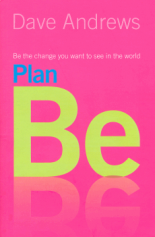Meaningful Interfaith Engagement – The Relational Challenge
Dave Andrews
Meaningful interfaith engagement is a personal – but it is also relational.
Change may start with us, but if it stops with us – it will stop altogether! We need to make changes – but others need to make changes too. Unless we all choose to relate to one another proactively we can never hope to experience a healthy sense of community with one another.
My friend, Mike Riddell says, ‘Some people consider it demeaning to have a need for anything else. They follow the illusion of autonomy.’ But Mike says ‘The teaching of the universe is that all things live together. Nothing is totally independent. All that has life is in relationship.’
Mike says’ This is not a cause for resentment, but celebration. The tree has need of the soil, the soil has need of the rain, the rain has need of the cloud, the cloud has need of the air, the air has need of the tree, and all have need of (All). None detracts from the other, and in their harmony they allow each other to be fully what they are.’
Mike insists ‘Humans are intensely relational creatures. (We) need each other. (We) shrivel with rejection and loneliness, (but) flourish with love and affirmation.” And Hugh Mackay, the respected Australian social researcher, concurs, saying, ”We are social creatures – we thrive on our personal connections with each other. We are at our best when we are fully integrated with the herd; we are at our worst when we are isolated.’
According to activist comedian Fran Peavey, there is potential for connectedness with not just the few with whom we share an obvious and immediate affinity, but all our brothers and sisters in the human family, regardless of the glaring differences and ongoing difficulties between us.
‘Those of us working for social change’, says Peavy, ‘tend to view our adversaries as enemies, to consider them unreliable, suspect, and generally of lower moral character’. Saul Alinsky, a brilliant community organizer, explained the rationale for polarization this way: “One acts decisively only in the conviction that all the angels are on one side and all the devils are on the other. A leader may struggle toward a decision and weigh the merits and demerits of a situation which is 52 per cent positive and 48 percent negative, but once a decision is reached he must assume that his cause is 100 per cent positive and the opposition 100 per cent negative. Many liberals, during our attack on the then school superintendent (in Chicago), were pointing out that after all he wasn’t a 100 percent devil, he was a regular churchgoer, he was a good family man, and he was generous in his contributions to charity. (But) can you imagine in the arena of conflict charging that (he was) a ‘bastard’, then diluting the impact of the attack with qualifying remarks? This becomes political idiocy.”
But, as Peavy points out, ‘demonizing one’s adversaries has great costs. It is a strategy that tacitly accepts and helps perpetuate our dangerous enemy mentality.’ So the strategy may help a group of people achieve a specific outcome in a particular conflict, but the relationships of enmity that the strategy engenders are actually inimical to the development of true healthy inclusive community.
Hence Peavy says, ‘instead of focusing on the 52 per cent ‘devil’ in my adversary, I choose to look at the other 48 per cent. To start from the premise that within each adversary I have an ally.’ She acknowledges ‘that ally may be silent, faltering, or just hidden from my view.’ But she acts on the assumption that ‘apparent enemies’ are’ potential allies’ – if not friends.
Robert Putnam refers to Saul Alinsky’s approach as ‘bonding’, and to Fran Peavy’s approach as ‘bridging’. Bonds are strong connections, between like-minded people, like people of the same religion, that are exclusive. They produce deep, ‘thick’ trust’, and are essential for supporting one another – for ‘getting by’. Community organisers like Saul Alinsky help like-minded people bond pretty well. Bridges are weak connections, between people who are not alike, like people from different religions, that are inclusive. They produce broad, ‘thin trust’, and are crucial for co-operating with others – for ‘getting on’. Community animators like Fran Peavy help people who are not like-minded bridge the gap to one another.
Robert Putnam says that if we are to develop healthy inclusive communities, we need to move beyond merely bonding with people who are like-minded people (who believe the same us) against people who are not like-minded (who don’t believe the same us) to bridging the gaps between people (including ‘believers’ and ‘unbelievers’) who do not appear to be alike at all.
Chris Marshal says ‘The deliberate fostering of interpersonal relationships across opposing group lines (of people from different religions in conflict with one another) is a powerful, though underappreciated, tool for conflict transformation. Arguably the best (perhaps the only) way to initiate change in the consciousness of mutually hostile groups towards peaceful coexistence is by the building of one-to-one friendships among individuals from both sides. Such relationships, by their very existence, disallow the wholesale “demonizing” of the other group. Just as the impact of collective violence is ultimately experienced by individual actors and disseminated through networks of personal relationships, so the impact of individual acts of peacemaking can accumulate over time and spread through relational networks that tie communities together, until a tipping point is reached and society-wide shifts in consciousness occur. As stories spread of opponents “acting out of character”, they erode the foundations of prejudice and stereo-typing upon which centuries-long structures of animosity often rest.’
Meaningful interfaith engagement provides all of us with an opportunity to develop an awareness of ourselves as persons-in-relationships – and of our need to move from dependence, through independence, towards interdependence, characterised by developing relationships of mutual respect between people of other religions.



